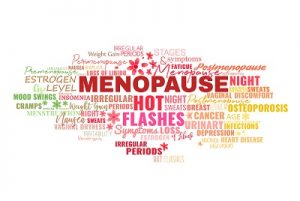Looking for a way to reduce symptoms of menopause & perimenopause?
As a woman goes through the menopause naturally her oestrogen and progesterone levels decline as the ovaries stop ovulating and periods stop completely. This time can lead to a number of unpleasant symptoms, which can include hot flushes, lethargy, stiff joints, reductions in mood and itchy skin. Cryotherapy essentially enables a reset of your hormones which assists in minimizing symptoms associated with the menopause.
So how can cryotherapy help you reduce symptoms of menopause?
Hot flushes
One of the most common and unpleasant symptoms of the menopause is the hot flushes that occur as oestrogen levels decline and they can last for up to a few years after the menopause. I am sure some of you can relate to this sudden onset of heat that comes out of nowhere, the embarrassing flushing at the most inopportune times, the sleep disturbances, the sweating, all of which you wish you could do without.
Oestrogen is involved in the workings of the body’s thermostat to the brain. When oestrogen levels drop during the menopause, the thermostat goes wonky, it appears to malfunction and detects very small changes in body temperature as large changes. The brain thinks the body is overheating when actually it’s not.
Cryotherapy has been reported to improve hormonal response and balancing, almost like a reset of this internal thermostat. The consequence of this leads to reductions in hot flushes during the menopause and therefore less of those embarrassing moments and sleepless nights. We recommend a weekly use of the cryotherapy chamber to really notice a chance in frequency and intensity of got flushes, for some they may experience a complete halt of this unfortunate symptom.
Mood
Due to the fluctuations in hormones as well as woman struggling to accept, they are going through this stage, it is not uncommon for a woman’s mood to fluctuate. One day you may feel happy and positive and then the next day you may feel sadness and present with symptoms of depression. Cryotherapy has been shown to reduce these symptoms of depression and improve mental state and quality of life (Szczepańska-Gieracha et al., 2014). It is suggested that this occurs as there is an increase in the production of endorphins, specifically dopamine, a brain neurotransmitter associated with mood and emotional responses.
Stiff and achy joints
It is not uncommon for women to complain of achy muscles and stiff joints. During whole body cryotherapy the skin responds to the exposure to the cold temperature by sending a message to the brain which then prompts a cascade of neurological, endocrine and immune regulatory functions around the body. This encourages an increase in white blood counts, leading to an anti-inflammatory response and improved immune function. These physiological and biological changes lead to a reduction in inflammatory markers, reduced stiffness and pain in joints and muscles (Swenson et al., 1996).
Itchy skin
It has only been in reset years that medical world have recognised that the change in hormones during the menopause also affects biomechanical properties of the skin. This often presents with severe itching (Wines & Willsteed., 2001). Cryotherapy can assist in decreasing the inflammatory response and calming down the itchy discomfort.
Weight gain
Studies have demonstrated that the menopausal transition is associated with unfavourable changes in body composition, abdominal fat deposition and weight gain. There are multiple reasons for weight gain and it is complex in nature, however there is a reduction in oestrogen leading to reductions in energy expenditure. Basal metabolic rate decreases as well as changes in adipose tissue metabolism which may contribute to the accumulation of body fat after menopause. Lastly changes to inflammatory markers may also influence weight gain during this time (Davis et al., 2012). During a cryotheraoy session your body attempts to maintain a constant temperature to try to keep the body warm during the few minutes in the cryochamber. This leads to increases in metabolism and therefore assists in promoting weight loss. There is also some early research to suggest cryotherapy leads to an enhanced regulation of leptin, which is a hormone that is associated with sensations of satiety, therefore can lead to appetite regulations.
Sleep
Good quality sleep is essential for our health and wellbeing, and it is becoming clearer that disrupted sleep is associated with increases in risks of health-related diseases such as cardiovascular disease, dementia. During the menopause it is common for women to complain of disruptions to their sleep or for some sleepless nights (Freedman., 2007). Cryotherapy can assist in helping individuals to obtain a good night’s sleep without interruptions due to the regulation of the central activity levels (Douzi et al., 2019).
TAKE THE CRYO100 TEN DAY CHALLENGE
Frequently asked questions around cryotherapy for the menopause
How often should I go in the chamber to notice improvements? To reduce symptoms of menopause, specifically for the reduction of hot flushes we recommend a weekly treatment to gain the biggest effect. If you can manage 2 times a week even better, but once should enable you to notice an improvement.
Are there any side effects? For treatment of menopause symptoms there are no known side effects, however if you are concerned please speak to a healthcare professional to check.
What if I am taking hormone replacement therapy? It is advised to continue of your current treatment and do not stop this without consulting with your health care practitioner. There are no contraindications to using the cryotherapy chamber whilst taking hormone replacement therapy, however once again if you are concerned about anything please speak to your healthcare practitioner who can reassure you.
Will cryotherapy stop my hot flushes? For some of our clients they have reported there has been a dramatic improvement in their experience of hot flushes with a significant reduction of frequency and intensity reported. After an extended course of treatment, you may find that hot flushes may become a thing of the past, of if not notice a significant improvement in their occurrence.
Should I be aware of anything else that can exacerbate symptoms of the menopause? Like a lot of health-related issues, we as human being often look for a quick fix, that simple cure. However, we now understand we need to take a 360 degree approach to health. This is the same for the menopause. So whilst cryotherapy will lead to significant improvements in your symptoms we would also advise you to ensure you try to maintain a healthy weight, partake in regular physical activity, ensure you keep to a regular sleep pattern and try to consume a balanced diet with lots of fruit and vegetables as well as focusing on calcium and vitamin D. Additionally try to avoid smoking and reduce alcohol intake where possible. All of these components along with cryotherapy may mean the nasty symptoms of the menopause may become much less of a problem for you.
If you are experiencing the menopause and are suffering from any of the symptoms described, why not pop by and see whether cryotherapy can help you through this transitional stage.
TAKE THE CRYO100 TEN DAY CHALLENGE
Submited by
References





